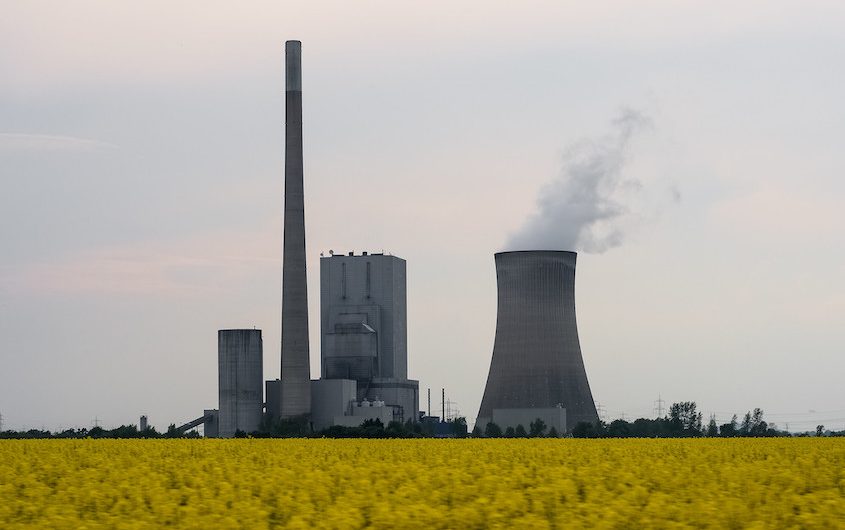
x1klima via Flickr
Where Do They Stand on Climate? Comparing German Party Programs

Leon Lieblang
University of Duisburg-Essen
Leon Arvid Lieblang is a former NRW Fellow at AICGS in October and November 2019. He is a research assistant and PhD candidate at the University of Duisburg-Essen, Germany.
Mr. Lieblang’s research focuses on climate and renewable energy policy. he lectures on energy policy and public administration. Mr. Lieblang holds a bachelor’s degree in Politics, Law, and Economics from the University of Erfurt and a master’s degree in Political Management, Public Policy, and Public Administration from the NRW School of Governance. Additionally, he has studied abroad at Sciences Po Lyon, France, and at the Uniwersytet Jagielloński in Kraków, Poland.
Prior to his PhD studies, Mr. Lieblang worked as an advisor at the Ministry of Economic Affairs and Energy of North Rhine-Westphalia. In his position in the Minister’s Office, his responsibilities included strategic planning, coordinating the state government’s agenda, and writing speeches for the minister.
During his stay at AICGS, he worked on U.S. climate policy at the state and federal levels. His research compared various U.S. states' approaches to dealing with U.S. withdraw from the Paris Agreement announced by President Donald Trump. Specifically, Mr. Lieblang assessed which states are developing their own climate agendas, their motivations for doing so, and possible relevant explanatory factors.
Please feel free to contact Mr. Lieblang at leon.lieblang@uni-due.de.
Climate politics is back on the agenda. According to a recent poll, 34 % of the Germans consider environment and climate an important current issue. Still far away from their all-time high in September 2019 (59 percent), the numbers have doubled since February 2021 (16 percent). Moreover, it is likely that the recent floods in Western Europe will reinforce this trend. With less than 70 days until the Bundestagswahl (German Federal Election), it is time to take a closer look at the party programs to address the question: Where do they stand on climate?
As most of the programs’ proposals revolve around the further development of already established measures, the main instruments used in Germany to tackle climate change could be summarized as:
- The EU Emissions Trading System (EU ETS) that covers emissions mainly from electricity production and industry.
- A CO2 pricing, introduced in Germany in 2021 to reduce the emissions from housing and transportation. (The reduction of emissions mainly from transport, housing and agriculture are a national responsibility, even though the EU prescribes individual targets for each member state.)
- The so called “EEG apportionment,” which finances renewable energies.
The hard facts: reaching carbon neutrality and 100% renewables
An important point of reference is the Paris Agreement. Its 1.5 degrees celsius target is acknowledged by all parties but one. The Christian Democratic Union (CDU), the Christian Social Union in Bavaria (CSU), the Social Democratic Party (SPD), the Greens and the Free Democratic Party (FDP/Liberals) explicitly acknowledge the target in their party programs. The Left is less specific but make the criticism that with current policies, the 1.5 degrees target is not in reach. Alternative for Germany (AfD) wants to withdraw from the Paris Agreement.
In order to actually achieve the 1.5 degrees target, a fast reduction of CO2 emissions is crucial. Nevertheless, the parties’ timeframes for reaching net-zero carbon dioxide emissions differ significantly. It comes with no surprise that the CDU, CSU and SPD are consistent with their recently announced targets, aiming for carbon neutrality by 2045. Some of their opponents aim for a faster transformation process. The Greens promise carbon neutrality “in 20 years” (p. 6). Surprisingly, this is not even the most ambitious plan. The Left aims for carbon neutrality by 2035. The Liberals have the least ambitious target, committing to climate neutrality by 2050. The AfD rejects the goal of carbon neutrality altogether.
One of the most important ways for reaching climate neutrality is the transformation of the energy sector. Renewable energies play a key role within the process. Again, the parties’ targets differ significantly: The SPD aims for 100 % renewables by 2040 and the Greens by 2035. The Left suggests moving to renewables as soon as possible. Additionally, the Greens and the Left want a phase-out for coal by 2030, which is planned between 2035 and 2038 under current regulations. Other parties are less clear: the CDU and CSU want to “decisively advance the expansion of renewable energies” (p. 42); the Liberals explicitly reject renewable energy expansion; the AfD wishes to heavily restrict the expansion of renewable energies and continue to burn coal.
Market-based or state-controlled: different approaches to reaching targets
There are just as many approaches to reaching the different targets. The measures are closely linked to the parties’ preferences for the roles of state and market. Nevertheless, what is striking is a far-reaching agreement on the importance of the EU Emissions Trading System (EU ETS). The Liberals want to increase the mechanism’s importance considerably—the EU ETS, which currently covers mainly the energy and industry sectors, shall be enlarged to all sectors, including housing and transportation. The CDU and CSU also agree on the central role of the EU ETS. On the international level, the CDU, CSU, and Liberals suggest a carbon border adjustment mechanism for carbon leakage protection. In comparision, The SPD is slightly less specific. It promises to “safeguard our industries and make the relocation of production and emissions abroad less attractive” (p. 10). The Greens aim to initiate several changes to the EU ETS, e. g. reducing certificates significantly. Only the Left attaches little importance to emission trading. Their approach is a declaration of binding targets for companies.
The second important instrument to reduce CO2 emissions is CO2 pricing, which was established in 2021. At its core, fuels are made more expensive by an initially fixed CO2 price, increasing prices for fossil fuel based cars and heating. The CDU and CSU use very vague wording in the program which at most indicates higher prices. The Greens, on the other hand, have a specific target—the national CO2 price shall reach 60 euro per ton in 2023, not 35 euro per ton as currently planned.
A matter of importance: social compensation
The climate question is also a social question. The yellow vest protests in France are an often cited as an example of rising prices for consumption goods leading to extensive resistance. Aware of the measures’ significant impacts on households, most of the parties offer social compensation as a solution. The CDU and CSU want to lower household electricity bills using revenues from the EU ETS. The Liberals suggest a so-called “climate dividend” (p. 59). All parties agree to abolish (partly or full) the EEG apportionment, which accounts for about 20 percent of the price of electricity. The CDU and CSU want a full abolishment, offset by revenues from the carbon pricing mechanism. The SPD has similar plans and promises to expand social benefits with a “per-capita-bonus” (p. 10). The Greens promise a per-capita refund using revenues from the national carbon pricing. The Liberals suggest lowering the electricity tax. The Left wants to reduce a large part of the EEG apportionment and introduce changes to move toward a state-funded system.
Conclusion: agreement in principle, differences in the details
Perceived as one of the most important topics for the upcoming German federal election, political positions on environment and the climate are decisive for German parties. Four conclusions can be drawn from the analysis: First, the parties’ ambitions differ significantly. Even though all parties, with the exception of the AfD, recognize the 1.5 degree target, their timeframes for achieving overall goal of climate neutrality differ considerably, ranging from 2035 to 2050. Second, the parties’ instruments for achieving their climate targets track closely their general political positions. The CDU, CSU, and Liberals prefer the EU ETS as the central instrument. The center-left parties prefer a mixture of market and regulatory tools, adding elements such as a base price. Third, all party programs — to different degrees — lack details. This might be a deliberate strategy to avoid public backlash. At a debate earlier this year, the Greens’ chancellor candidate Annalena Baerbock suggested that fuel prices should increase by16 euro cent per liter until 2023. Even though the Grand Coalition had already decided on measures that will increase prices by 15 euro cent per liter until 2025, the Greens were once again perceived as a party that will significantly raise prices for consumers. The CDU and CSU program is unspecific and aimed at avoiding criticism, adding to the much-quoted notion that Armin Laschet wants to reach the chancellor’s office “in the sleeper.” Fourth, there are some overlaps in the programs. Except for the AfD, all the parties want to incorporate social compensations.
This leads to a final question: Are there insurmountable obstacles for climate policy in future coalition talks? This seems unlikely due to the vagueness of the party programs. In contrast to the coalition talks between the CDU, CSU, Greens, and Liberals four years ago, in which climate was a key issue, the parties’ positions have converged. Negotiations will — regardless of the parties involved — undoubtedly still be challenging, most likely focusing on how fast climate policies need to accelerate and how much regulation is necessary.
Sources
The program of the CDU and CSU (CDU and CSU 2021)
The program of the SPD (SPD 2021)
The program of the Greens (Greens 2021)
The program of the Liberals (Liberals 2021)
The program of the Left (The Left 2021)
The program of the Alternative für Deutschland (AfD 2021)









